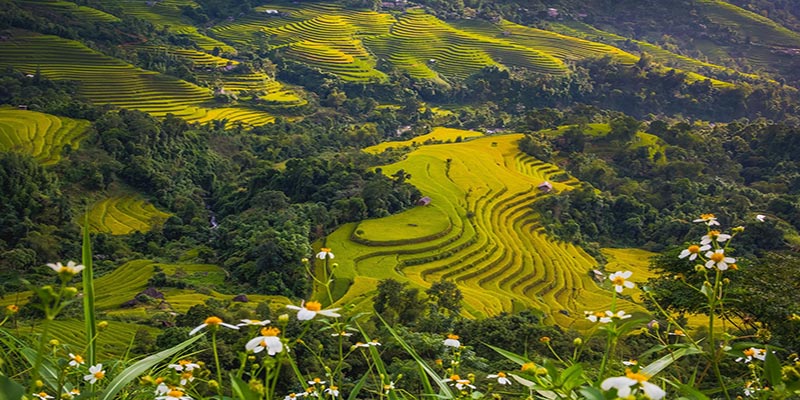Like Rock Art on cave walls: the human imprint on landscapes and biodiversity
Postdoctoral researcher Tabitha Kabora briefly outlines why understanding historical land use can provide important insights on contemporary Anthropocene biodiversity patterns and facilitate conservation efforts.

Aerial photographs of landscapes can show the complex and sometimes artistic ways in which human landscape modifications leave their mark. These human imprints range from the sinuous patterns of terraces following the contours of hill slopes to rice paddies arranged to form large scale land art. While these large scale human imprints as complex and intricate as rock art highlight the landscape modifications, they also draw attention to the attendant effects these land transformations would have on biodiversity in these landscapes.
Understanding the connection between human land use and Anthropocene biodiversity is necessary for conservation efforts and it is important to not only explore these relationships at the present but to also understand the long-term processes in the Holocene that have shaped landscapes and biodiversity. In a paper by Ellis et al. 2021 titled “People have shaped most of terrestrial nature for at least 12,000 years” the long term impacts of human land use are explored in the context of how they have shaped biodiversity not only through the Holocene but also into the Anthropocene and what this would mean for conservation strategies. Looking at historical land uses using archaeological and palaeoecological information has highlighted the extent to which human communities have altered and transformed landscapes through time. The knock-on effect these long-term interactions have had on biodiversity is of great significance in conservation efforts.
The first that we can say is that humans have been modifying landscapes, far earlier in the past than previously thought, right through the Holocene, and with it modifying patterns of species and habitat diversity. These land-use changes could have resulted in the creation of areas of endemism and biodiversity hotspots as landscape transformations pushed species into areas of refugia over decades and centuries. What do these Holocene land-use transformations mean for where we find biodiversity hotspots or areas of high biodiversity endemism? How can we create new land-use strategies from lessons we learn from historical information that integrate land-use with biodiversity conservation? These are some of the questions my research and the research being conducted under the Leverhulme Centre for Anthropocene Biodiversity are trying to explore.
Related links
Find out more about Tabitha Kabora's research.
Related links
Find out more about Tabitha Kabora's research.